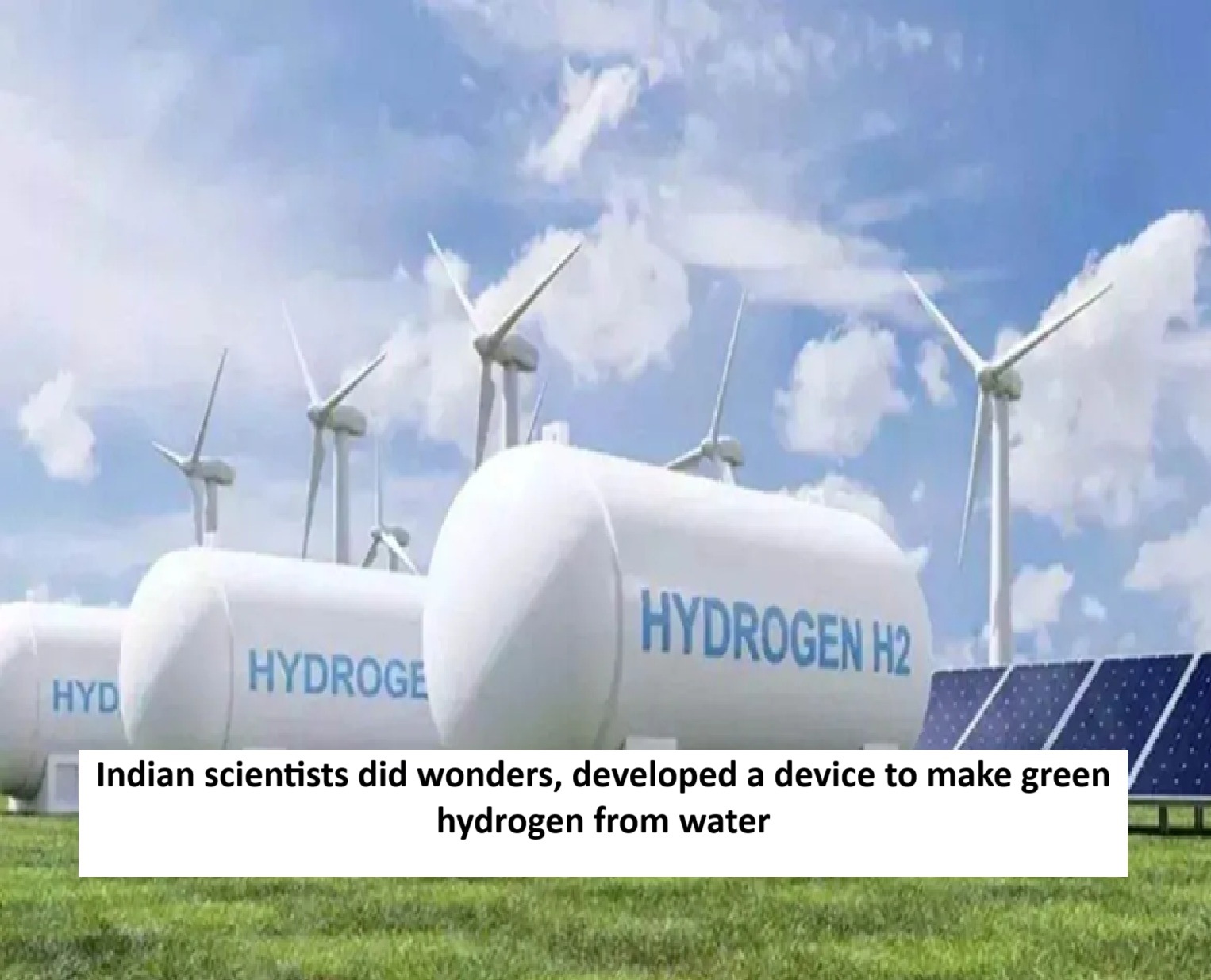
News Topical, Digital Desk : To save the continuously warming earth, India does not just talk in empty words but proves through its actions that Indians do not call the earth mother for nothing.
India has not only gone ahead and set the target of zero carbon emissions by 2070 but is also taking several steps to achieve this goal. In this connection, Indian scientists have created a device that will allow green hydrogen to be produced from water using solar energy.
Green hydrogen is one of the cleanest fuels
It is worth noting that green hydrogen is one of the cleanest fuels, which is capable of freeing industries from carbon emissions, running vehicles and storing renewable energy, but a lot of funds are required to make green hydrogen.
Till now there was no economical device or method to make green hydrogen. By developing this device, Indian scientists have once again proved their talent. It has been proved that Indians can give excellent results even in the absence of funds.
A team of scientists from Bengaluru developed this next generation device
A team of scientists from the Centre for Nano and Soft Matter Sciences (CeNS), Bengaluru, an autonomous institute of the Department of Science and Technology, has developed this next-generation device that produces green hydrogen from water molecules using only solar energy and materials abundantly available on earth, without relying on fossil fuels or expensive resources.
The device demonstrated exceptional long-term stability, operating continuously for more than 10 h under alkaline conditions with a performance degradation of only 4 percent, a rare achievement in Si-based photoelectrochemical systems.
Green hydrogen can also be produced on a large scale
Dr. Ashutosh K. Singh of CeNS, who led this research, said, "By selecting smart materials and combining them into heterostructures, we have created a device that not only enhances performance, but can also produce green hydrogen on a large scale. With this, we have come closer to affordable and large-scale solar energy-to-hydrogen energy systems." This research has been published in the Journal of Material Chemistry A.
This achievement is much more than the success achieved in the laboratory
This achievement is more than just a laboratory success. The device achieved an outstanding photovoltage of 600 mV, making it highly effective in generating hydrogen under solar energy.
This device is attractive for several reasons
This device is attractive for several reasons, including high efficiency, low energy input, robust durability, and affordable materials, all in one package. It demonstrated successful large-scale demonstration, with a 25-cm square photoanode producing excellent results in producing green hydrogen from water.
Researchers believe this is just the beginning. In the future, this technology could fuel hydrogen-based energy systems, from homes to factories, that would be entirely dependent on the sun.
The device is designed such
The team of researchers, led by Dr. Ashutosh K. Singh, designed a state-of-the-art silicon-based photoanode using an innovative n-i-p heterojunction architecture. It consists of stacked n-type TiO2, intrinsic (undoped) Si, and p-type NiO semiconductor layers that work together to enhance charge separation and transport efficiency.
The material was deposited using magnetron sputtering, a scalable technique that also ensures precision and efficiency. This approach ensured better light absorption, faster charging, and lower losses in case of recombination, which are crucial for producing hydrogen from solar energy.
--Advertisement--

 Share
Share



